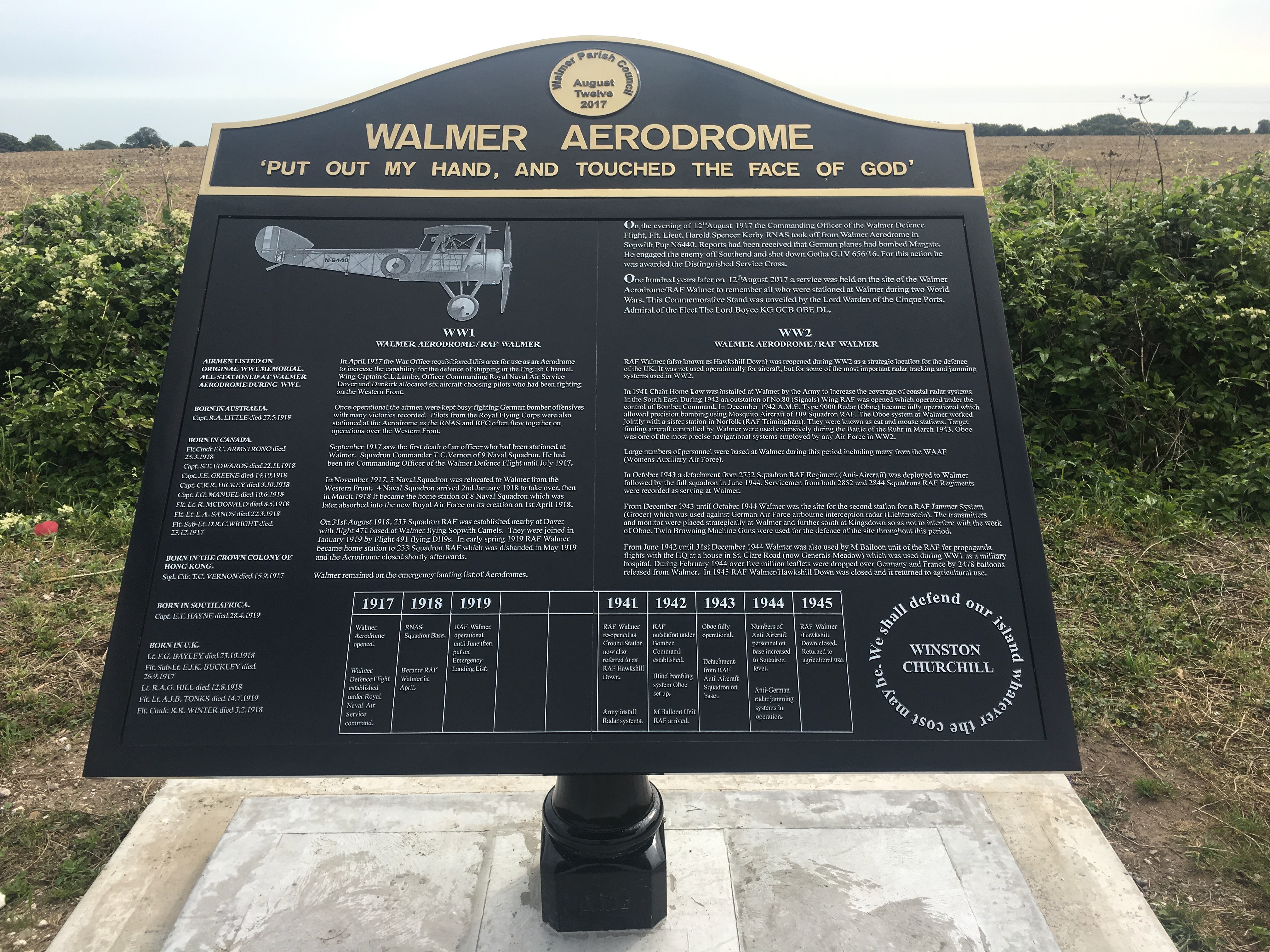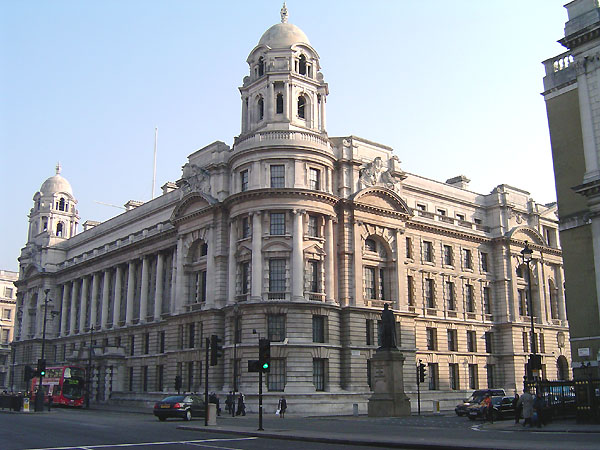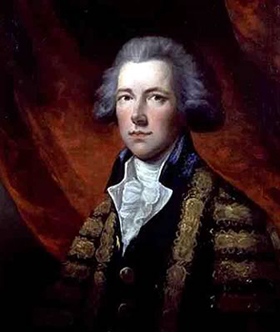|
Walmer Castle
Walmer Castle is an artillery fort originally constructed by Henry VIII in Walmer, Kent, between 1539 and 1540. It formed part of the King's Device Forts, Device programme to protect against invasion from France and the Holy Roman Empire, and defended the strategically important The Downs (ship anchorage), Downs anchorage off the English coast. Comprising a keep and four circular bastions, the moated stone castle covered and had 39 firing positions on the upper levels for List of medieval and early modern gunpowder artillery, artillery. It cost the Crown a total of £27,092 to build the three castles of Walmer, Sandown Castle, Kent, Sandown, and Deal Castle, Deal, which lay adjacent to one another along the coast and were connected by earthwork defences. The original invasion threat passed, but during the Second English Civil War of 1648–49, Walmer was seized by pro-Cavalier, Royalist insurgents and was only retaken by Roundheads, Parliamentary forces after several months' f ... [...More Info...] [...Related Items...] OR: [Wikipedia] [Google] [Baidu] |
Walmer
Walmer is a town in the district of Dover, Kent, in England. Located on the coast, the parish of Walmer is south-east of Sandwich, Kent. The town's coastline and castle are popular amongst tourists. It has a population of 6,693 (2001), increasing to 8,178 at the 2011 Census. Walmer is closely associated with its adjoining neighbour, the town of Deal - sharing many amenities and services and benefiting from Deal's High Street shopping area. Walmer railway station is on the Kent Coast Line. History Julius Caesar Julius Caesar reputedly landed on the beach here in 55 BC and 54 BC. It is only one possible landing place, proposed judging from the distances given in his account of the landings in his ''Gallic Wars''. In the 19th century it was thought that he had landed by Deal Castle – hence a house there with SPQR emblazoned on its gate – but in 1907 the landing point has been proposed to be half a mile further south, beyond the lifeboat station, and marked by a co ... [...More Info...] [...Related Items...] OR: [Wikipedia] [Google] [Baidu] |
Deal Castle
Deal Castle is an artillery fort constructed by Henry VIII in Deal, Kent, between 1539 and 1540. It formed part of the King's Device programme to protect against invasion from France and the Holy Roman Empire, and defended the strategically important Downs anchorage off the English coast. Comprising a keep with six inner and outer bastions, the moated stone castle covered and had sixty-six firing positions for artillery. It cost the Crown a total of £27,092 to build the three castles of Deal, Sandown and Walmer, which lay adjacent to one another along the coast and were connected by earthwork defences. The original invasion threat passed but, during the Second English Civil War of 1648–49, Deal was seized by pro-Royalist insurgents and was only retaken by Parliamentary forces after several months' fighting. Although it remained armed, Deal was adapted by Sir John Norris and Lord Carrington during the 18th and 19th centuries to form a more suitable private house for th ... [...More Info...] [...Related Items...] OR: [Wikipedia] [Google] [Baidu] |
Second World War
World War II or the Second World War (1 September 1939 – 2 September 1945) was a World war, global conflict between two coalitions: the Allies of World War II, Allies and the Axis powers. World War II by country, Nearly all of the world's countries participated, with many nations mobilising all resources in pursuit of total war. Tanks in World War II, Tanks and Air warfare of World War II, aircraft played major roles, enabling the strategic bombing of cities and delivery of the Atomic bombings of Hiroshima and Nagasaki, first and only nuclear weapons ever used in war. World War II is the List of wars by death toll, deadliest conflict in history, causing World War II casualties, the death of 70 to 85 million people, more than half of whom were civilians. Millions died in genocides, including the Holocaust, and by massacres, starvation, and disease. After the Allied victory, Allied-occupied Germany, Germany, Allied-occupied Austria, Austria, Occupation of Japan, Japan, a ... [...More Info...] [...Related Items...] OR: [Wikipedia] [Google] [Baidu] |
Mary Curzon, Baroness Curzon Of Kedleston
Mary Victoria Curzon, Baroness Curzon of Kedleston, (née Leiter; 27 May 1870 – 18 July 1906), was an American heiress who married George Curzon, 1st Marquess Curzon of Kedleston, George Curzon, the future Viceroy of India. In America Mary Victoria Leiter was born in Chicago, the eldest daughter of Mary Theresa (née Carver) and Levi Leiter, Levi Ziegler Leiter, the wealthy co-founder of Field and Leiter dry goods business, and later partner in the Marshall Field retail empire. On her father's side, she was of Swiss people, Swiss-German descent. Her family moved to Washington, D.C. in 1881 and entered the exclusive circle of official society there. They lived for several years in the former home of James G. Blaine on Dupont Circle before moving into the Leiter House. The family also spent time at Lake Geneva, Wisconsin, Lake Geneva, earning her the sobriquet "''Lake Geneva Princess''." She was taught dancing, singing, music, and art at home by tutors and learned the French ... [...More Info...] [...Related Items...] OR: [Wikipedia] [Google] [Baidu] |
Lord Curzon
George Nathaniel Curzon, 1st Marquess Curzon of Kedleston (11 January 1859 – 20 March 1925), known as Lord Curzon (), was a British statesman, Conservative Party (UK), Conservative politician, explorer and writer who served as Viceroy of India from 1899 to 1905 and Foreign Secretary (United Kingdom), Foreign Secretary from 1919 to 1924. Curzon was born in Derbyshire into an aristocratic family and educated at Eton College and Balliol College, Oxford, before entering Parliament of the United Kingdom, Parliament in 1886. In the following years, he travelled extensively in Russia, Central Asia and the Far East, and published several books on the region in which he detailed his geopolitical outlook and underlined the perceived Russian Empire, Russian threat to British control of India. In 1891, Curzon was named Under-Secretary of State for India, and in 1899 he was appointed Viceroy of India. During his tenure, he pursued a number of reforms of the British Raj, British administrati ... [...More Info...] [...Related Items...] OR: [Wikipedia] [Google] [Baidu] |
Ministry Of Works (United Kingdom)
The Ministry of Works was a department of the UK Government formed in 1940, during the Second World War, to organise the requisitioning of property for wartime use. After the war, the ministry retained responsibility for government building projects. In 1962 it was renamed the Ministry of Public Building and Works, and acquired the extra responsibility of monitoring the building industry as well as taking over the works departments from the War Office, Air Ministry and Admiralty. The chief architect of the ministry from 1951 to 1970 was Eric Bedford. In 1970 the ministry was absorbed into the Department of the Environment (DoE), although from 1972 most former works functions were transferred to the largely autonomous Property Services Agency (PSA). Subsequent reorganisation of PSA into Property Holdings was followed by abolition in 1996 when individual government departments took on responsibility for managing their own estate portfolios. History The tradition of building spec ... [...More Info...] [...Related Items...] OR: [Wikipedia] [Google] [Baidu] |
War Office
The War Office has referred to several British government organisations throughout history, all relating to the army. It was a department of the British Government responsible for the administration of the British Army between 1857 and 1964, at which point its functions were transferred to the new Ministry of Defence (United Kingdom), Ministry of Defence (MoD). This article contains text from this source, which is available under th Open Government Licence v3.0 © Crown copyright It was equivalent to the Admiralty (United Kingdom), Admiralty at that time, which was responsible for the Royal Navy (RN), and (much later) the Air Ministry, which oversaw the Royal Air Force (RAF). The name 'Old War Office' is also given to the former home of the department, located at the junction of Horse Guards Avenue and Whitehall in central London. The landmark building was sold on 1 March 2016 by HM Government for more than British pound, £350 million, on a 250-year lease for conversion int ... [...More Info...] [...Related Items...] OR: [Wikipedia] [Google] [Baidu] |
Granville Leveson-Gower, 2nd Earl Granville
Granville George Leveson-Gower, 2nd Earl Granville (11 May 1815 – 31 March 1891), styled Lord Leveson until 1846, was a British Liberal statesman and diplomat from the Leveson-Gower family. He is best remembered for his service as Secretary of State for Foreign Affairs. His foreign policy kept Britain free from European wars and improved relations with the United States after the strain during the American Civil War. Background and education Leveson-Gower was born in London, the eldest son of Granville Leveson-Gower, 1st Earl Granville and Lady Harriet Cavendish, daughter of Lady Georgiana Spencer and William Cavendish, 5th Duke of Devonshire. His father was a younger son of Granville Leveson-Gower, 1st Marquess of Stafford and his third wife; an elder son with his second wife (a daughter of the 1st Duke of Bridgwater) became the 2nd Marquess of Stafford, and his marriage with the daughter and heiress of the 18th Earl of Sutherland ( Countess of Sutherland in her ... [...More Info...] [...Related Items...] OR: [Wikipedia] [Google] [Baidu] |
Arthur Wellesley, 1st Duke Of Wellington
Field marshal (United Kingdom), Field Marshal Arthur Wellesley, 1st Duke of Wellington (; 1 May 1769 – 14 September 1852) was a British Army officer and statesman who was one of the leading military and political figures in Britain during the late 18th and early 19th centuries, twice serving as Prime Minister of the United Kingdom. He was one of the British commanders who ended the Anglo-Mysore wars by defeating Tipu Sultan in 1799 and among those who ended the Napoleonic Wars in a Coalition victory when the Seventh Coalition defeated Napoleon at the Battle of Waterloo in 1815. Wellesley was born into a Protestant Ascendancy family in Dublin, Kingdom of Ireland, Ireland. He was commissioned as an Ensign (rank), ensign in the British Army in 1787, serving in Ireland as aide-de-camp to two successive lords lieutenant of Ireland. Wellesley was also elected as a Member of Parliament (United Kingdom), member of Parliament in the Irish House of Commons. Rising to the rank of Colon ... [...More Info...] [...Related Items...] OR: [Wikipedia] [Google] [Baidu] |
William Pitt The Younger
William Pitt (28 May 1759 – 23 January 1806) was a British statesman who served as the last prime minister of Kingdom of Great Britain, Great Britain from 1783 until the Acts of Union 1800, and then first Prime Minister of the United Kingdom, prime minister of the United Kingdom from January 1801. He left office in March 1801, but served as prime minister again from 1804 until his death in 1806. He was also Chancellor of the Exchequer for all of his time as prime minister. He is known as "Pitt the Younger" to distinguish him from his father, William Pitt the Elder, who had also previously served as prime minister. Pitt's prime ministerial tenure, which came during the reign of King George III, was dominated by major political events in Europe, including the French Revolution and the Napoleonic Wars. Pitt, although often referred to as a Tory (British political party), Tory, or "new Tory", called himself an "independent Whig (British political party), Whig" and was generally oppo ... [...More Info...] [...Related Items...] OR: [Wikipedia] [Google] [Baidu] |
Prime Minister Of The United Kingdom
The prime minister of the United Kingdom is the head of government of the United Kingdom. The prime minister Advice (constitutional law), advises the Monarchy of the United Kingdom, sovereign on the exercise of much of the Royal prerogative in the United Kingdom, royal prerogative, chairs the Cabinet of the United Kingdom, Cabinet, and selects its Minister of the Crown, ministers. Modern prime ministers hold office by virtue of their ability to command the confidence of the House of Commons of the United Kingdom, House of Commons, so they are invariably Member of Parliament (United Kingdom), members of Parliament. The office of prime minister is not established by any statute or constitutional document, but exists only by long-established Constitutional conventions of the United Kingdom, convention, whereby the monarch appoints as prime minister the person most likely to Confidence motions in the United Kingdom, command the confidence of the House of Commons. In practice, thi ... [...More Info...] [...Related Items...] OR: [Wikipedia] [Google] [Baidu] |
Lord Warden Of The Cinque Ports
Lord Warden of the Cinque Ports is the name of a ceremonial post in the United Kingdom. The post dates from at least the 12th century, when the title was Keeper of the Coast, but it may be older. The Lord Warden was originally in charge of the Cinque Ports, a group of five ( in Norman French) port towns on the southeast coast of England formed to collectively supply ships for The Crown in the absence of a formal navy at that time. Today, the post is a sinecure and an honorary title, and 14 towns belong to the Cinque Ports confederation. The title is one of the higher honours bestowed by the Sovereign; it has often been held by members of the Royal Family or by prime ministers, especially those who were influential in defending Britain in times of war. The Lord Warden was solely responsible for the return of all writs to the Crown, along with the collection of taxes and the arrest of criminals. His court was held in St James's church, near Dover Castle, and there he exercised ju ... [...More Info...] [...Related Items...] OR: [Wikipedia] [Google] [Baidu] |









